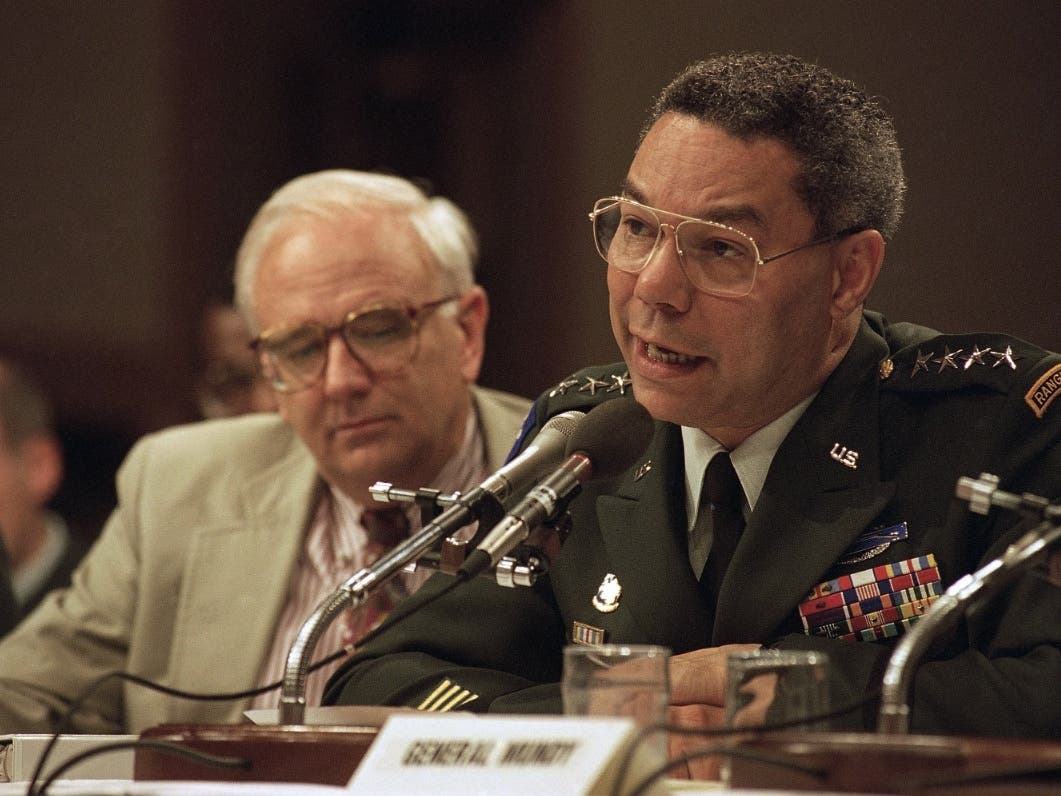Politics & Government
Colin Powell And Diversity In The Military Today
Colin Powell was a trailblazer in the United States military, which is becoming more diverse every day.

ACROSS AMERICA — Colin Powell, the first Black person to lead the United States military as Joint Chiefs chairman, died Monday from coronavirus complications.
Powell was a trailblazer. He joined the Army in 1962 and quickly rose through the ranks. He became chairman of the Joints Chief of Staff in 1989 and the next year led forces during the Gulf War to liberate Kuwait from Iraq — perhaps the highlight of his career.
The racial makeup of the military that Powell oversaw in the 1990s has changed as the United States has become more diverse.
Find out what's happening in Across Americawith free, real-time updates from Patch.
In 2015, racial and ethnic minority groups made up 40 percent of Defense Department active-duty military, up from 25 percent in 1990, according to the Pew Research Center, a U.S. nonprofit based in Washington, D.C., that bills itself as nonpartisan.
In 2018, about 75 percent of men in the Army were white, while about 20 percent were black, according to the Council on Foreign Relations, a U.S. nonprofit think tank in New York. For women, about 60 percent were white and 30 percent were black. The Army is the most diverse of the three military departments, compared with the Navy and Air Force.
Find out what's happening in Across Americawith free, real-time updates from Patch.
There are about 1.3 million active-duty military personnel, which is less than 1 percent of the country's population. Of the military-age 18-44 population, about 70 percent are white and 15 percent are black, according to the council.
"The U.S. military has taken significant steps over the past decade to build a more diverse and inclusive force that attracts the country’s top talent," the council wrote in 2018 in its Demographics of the U.S. Military report. "In particular, the services have opened more doors for women in recent years, ending restrictions on combat roles. However, women and racial and ethnic minorities remain underrepresented in parts of the military, particularly at the highest levels of leadership. The military has also opened its ranks to openly gay individuals, but it has maintained broad prohibitions on those who are transgender."
When the draft ended in 1973, women were just 2 percent of enlisted soldiers and 8 percent of military officers, according to the council. Today, those figures are 16 percent and 19 percent, respectively. People who are Hispanic, which is considered an ethnicity and not a race, represent about 18 percent among men in the military and 20 percent among women.
The military has also made some strides in gay and LGBTQ demographics, as the infamous "Don't ask, don't tell" policy was effectively ended by President Barack Obama in 2010. Obama in 2016 also allowed transgender people to join the military, although President Donald Trump ended that policy.
Patch national editor Beth Dalbey contributed to this report.
Get more local news delivered straight to your inbox. Sign up for free Patch newsletters and alerts.